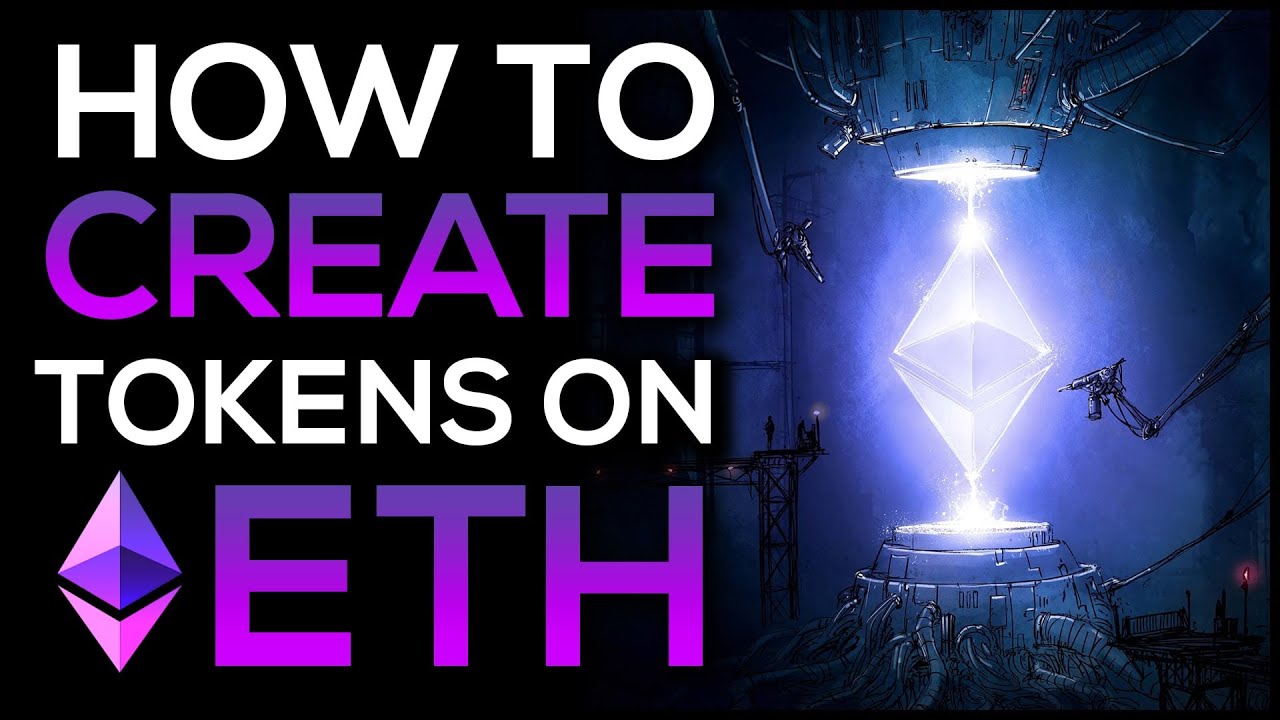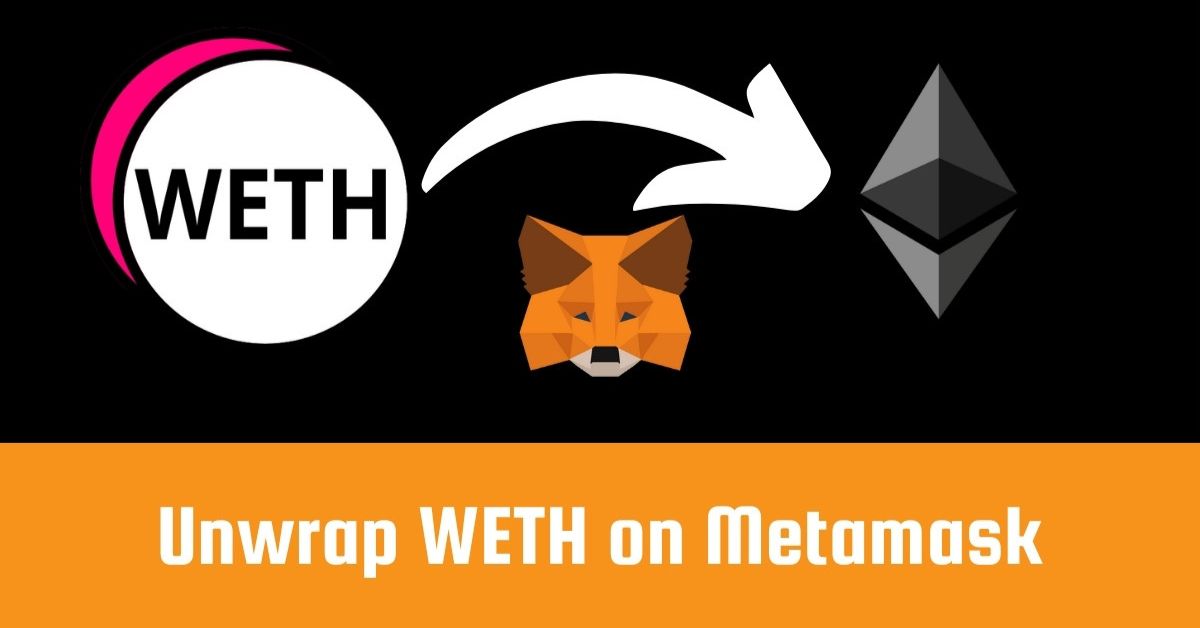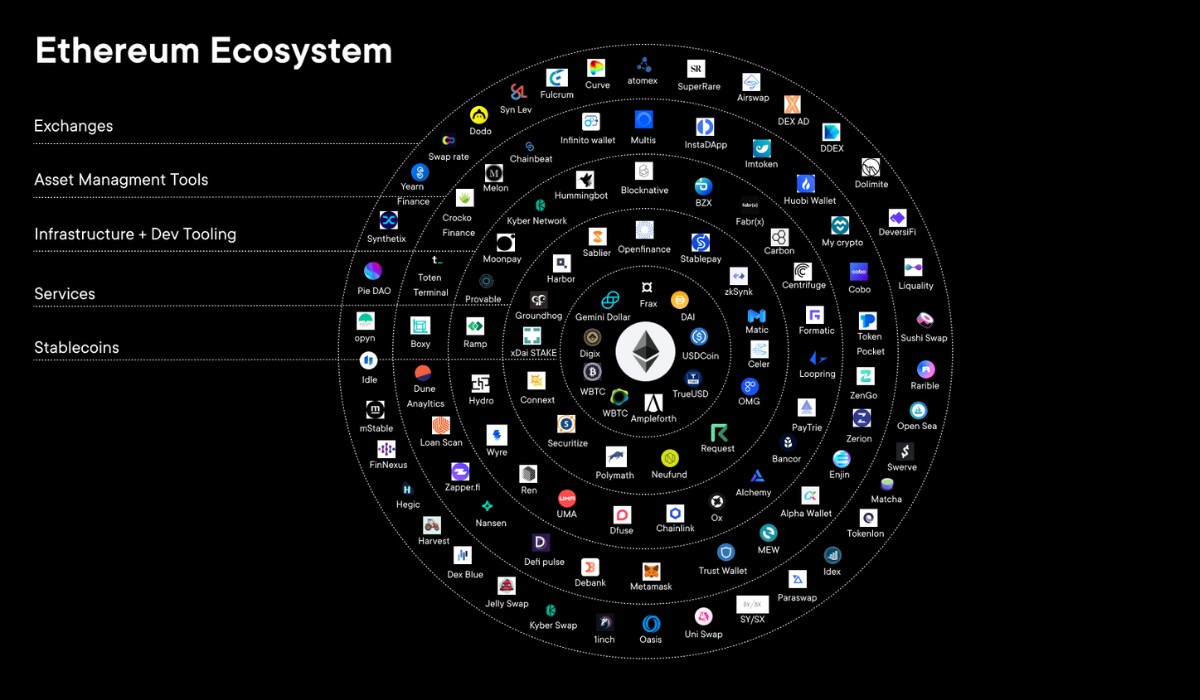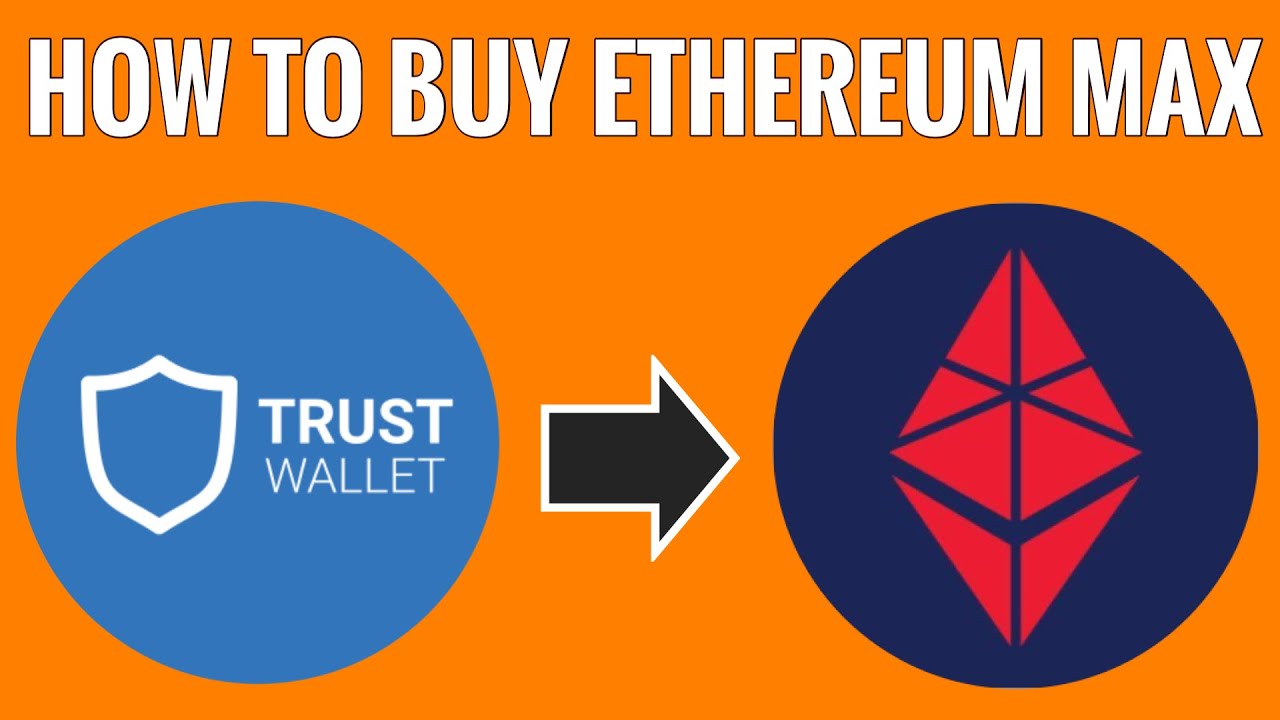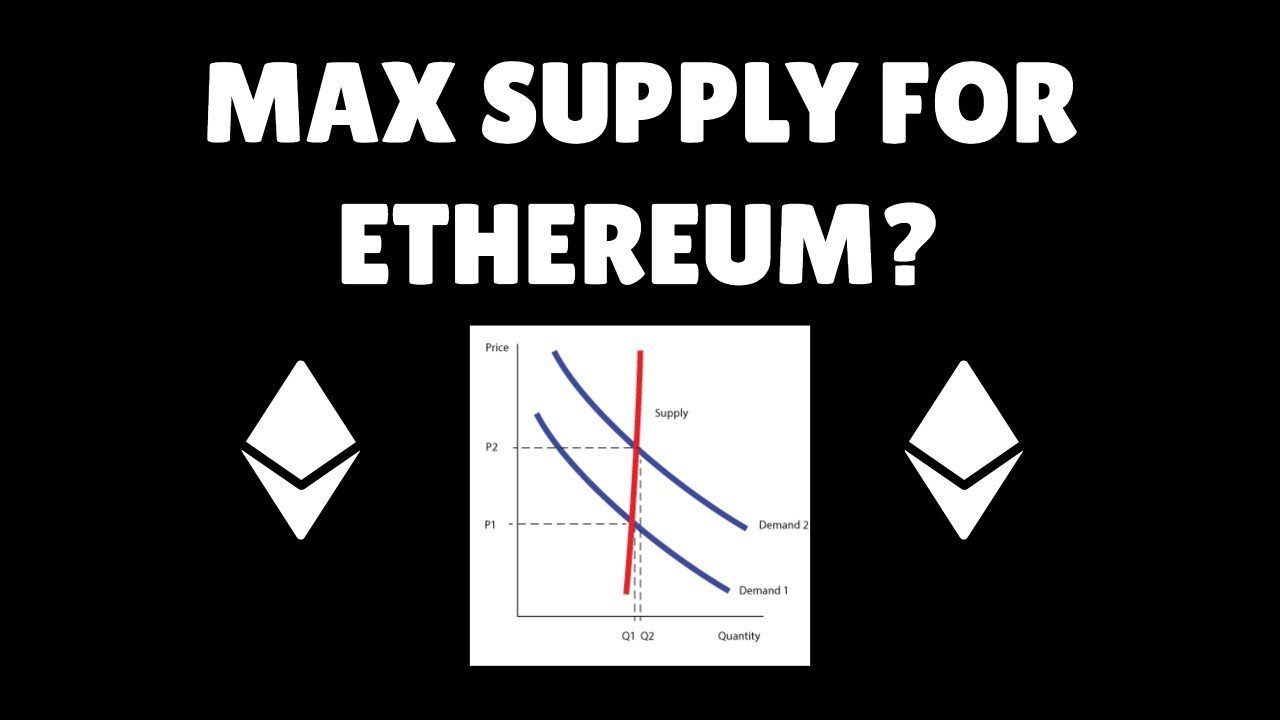Introduction
Welcome to the world of Ethereum tokens! In this article, we will explore how to create your very own Ethereum token, leveraging the power and flexibility of the Ethereum blockchain.
As the blockchain technology continues to revolutionize various industries, Ethereum has emerged as a prominent platform for developing decentralized applications (dApps) and issuing custom digital assets in the form of tokens.
But what exactly is an Ethereum token? Essentially, it’s a digital representation of an asset or utility on the Ethereum blockchain. These tokens can represent anything from cryptocurrencies to real-world assets like property, rewards points, or even virtual collectibles.
To create an Ethereum token, you’ll need some basic prerequisites and a working knowledge of Ethereum’s programming language, Solidity. Don’t worry if you’re new to Solidity or programming in general – we’ll guide you through the process step by step.
By the end of this tutorial, you’ll have the skills to create and deploy your own Ethereum token, ready for use in your dApp or project. So, let’s dive into the fascinating world of Ethereum token creation!
What is an Ethereum Token?
In the realm of blockchain technology, an Ethereum token is a digital asset or unit representing ownership or utility within the Ethereum network. These tokens are built on top of the Ethereum blockchain using smart contracts, which are self-executing contracts with predefined conditions.
Unlike cryptocurrencies such as Bitcoin or Ether (the native cryptocurrency of the Ethereum blockchain), tokens serve a variety of purposes. They can represent fungible assets, non-fungible assets, or even unique assets that are indivisible. Some common types of Ethereum tokens include ERC-20, ERC-721, and ERC-1155 tokens.
The most widely known and utilized type of Ethereum token is the ERC-20 token. It follows a specific set of rules and standards defined by the Ethereum community. ERC-20 tokens have become the foundation for many Initial Coin Offerings (ICOs) and enable seamless integration with exchanges and wallets.
On the other hand, ERC-721 tokens, also known as Non-Fungible Tokens (NFTs), are unique and indivisible assets. Each ERC-721 token has its own distinct value, properties, and characteristics. NFTs have gained tremendous popularity in the world of digital art, collectibles, and gaming, where uniqueness and scarcity drive their value.
Additionally, ERC-1155 tokens offer a hybrid approach by combining both fungible and non-fungible characteristics. They provide developers with the flexibility to create different types of assets within a single contract, reducing the complexity and gas costs associated with deploying separate contracts for each asset.
These Ethereum tokens have opened up a world of possibilities for businesses and individuals alike. They enable crowdfunding campaigns, loyalty programs, decentralized finance (DeFi) protocols, gaming economies, and much more.
By creating your own Ethereum token, you can harness the power and potential of decentralized finance, establish your own digital economy, or bring a unique asset to the blockchain.
In the next section, we’ll explore the prerequisites you need to set up your development environment for Ethereum token creation.
Prerequisites for Creating an Ethereum Token
Before delving into the process of creating an Ethereum token, there are a few prerequisites that you should have in place:
- Ethereum Development Environment: You will need to set up an Ethereum development environment to write, compile, and deploy smart contracts. There are several options available, such as Ganache, Truffle, or Remix, which provide tools and frameworks to streamline the development process.
- Understanding of Solidity: Solidity is the programming language used for developing smart contracts on the Ethereum blockchain. While prior knowledge of Solidity is not mandatory, having a basic understanding of the language will greatly assist you in creating your token.
- Ethereum Wallet: To interact with the Ethereum network and deploy smart contracts, you will need an Ethereum wallet. MetaMask is a popular choice as it provides a browser extension that acts as a wallet and allows for easy integration with various Ethereum tools and applications.
- Ethereum Test Network: Before deploying your token on the Ethereum main network, it is advisable to test your smart contract on a test network. Ropsten, Kovan, or Rinkeby are popular Ethereum test networks that simulate the main network environment without any real value at stake.
- Basic Knowledge of Blockchain: While not specifically related to Ethereum, having a fundamental understanding of blockchain technology will help you grasp the concepts behind Ethereum tokens and smart contracts. Familiarize yourself with the decentralized nature of blockchain, transaction validation, and the concept of trustless execution.
These prerequisites will lay the foundation for smooth development and deployment of your Ethereum token. Once you have these essentials in place, you can proceed with the creation process with confidence.
In the next section, we will begin by setting up the development environment for Ethereum token creation. Strap in and get ready to embark on an exciting journey into the world of blockchain-based digital assets!
Step 1: Setting up the Development Environment
The first step in creating an Ethereum token is to set up your development environment. This involves configuring the necessary tools and frameworks to write, compile, and deploy smart contracts on the Ethereum blockchain.
Here are the key components you will need:
- Ethereum Virtual Machine (EVM): The EVM is the runtime environment that executes smart contracts on the Ethereum blockchain. It is essential for testing and deploying your token. You can set up a local EVM using tools like Ganache, which provides a personal Ethereum blockchain for development purposes.
- Solidity Compiler: Solidity is Ethereum’s programming language used for writing smart contracts. You will need a Solidity compiler to convert your Solidity code into bytecode that can be executed on the EVM. One popular Solidity compiler is solc, which can be installed as a standalone command-line tool or used as part of a development framework like Truffle.
- Integrated Development Environment (IDE): An IDE will make your development process much smoother. Remix is a web-based IDE specifically designed for Ethereum development. It provides an intuitive interface for writing, compiling, and deploying smart contracts. Another popular choice is Visual Studio Code with the Solidity extension, which offers a powerful and customizable environment for Solidity development.
- Ethereum Wallet: To interact with the Ethereum network, deploy contracts, and test your token, you will need an Ethereum wallet. MetaMask is a widely used browser extension wallet that allows you to manage your Ethereum accounts. It seamlessly integrates with Remix and provides a user-friendly interface for interacting with the blockchain.
- Testing Framework: Writing tests for your smart contracts is crucial to ensure their functionality and security. Using a testing framework like Truffle or Hardhat allows you to write automated tests for your token contract. These frameworks provide utilities for deploying contracts, simulating scenarios, and asserting contract behavior.
By setting up these components in your development environment, you’ll be well-equipped to start creating your Ethereum token. Ensure that you have installed and configured the necessary tools and frameworks according to your preferences.
In the next section, we will dive into the process of writing the smart contract code for your token. Get ready to bring your token to life with the power of Solidity!
Step 2: Writing the Smart Contract Code
Now that you have set up your development environment, it’s time to start writing the smart contract code for your Ethereum token. The smart contract will define the functionalities and properties of your token, including its name, symbol, total supply, and any additional features you want to incorporate.
Here are the key steps to consider while writing the smart contract code:
- Importing Required Libraries: Depending on the functionalities you want to incorporate into your token, you might need to import external libraries. For example, if you want to use the OpenZeppelin library for standardized token interfaces, you would import it in your contract by stating `import “@openzeppelin/contracts/token/ERC20/ERC20.sol”;`.
- Contract Initialization: Define the contract name and inherit from the necessary token interfaces (e.g., ERC20 for a standard token). You can also specify the initial variables, such as the name, symbol, and decimal places, which will provide basic information about your token.
- Balances and Allowances: Set up a mapping to keep track of token balances for each address. Additionally, implement the allowances functionality to enable the approval and transfer of tokens on behalf of other addresses.
- Token Supply: Determine the total supply of your token and assign it to the contract creator’s address. You can also add a function to mint additional tokens in the future if desired.
- Token Transfers: Implement the transfer and transferFrom functions to allow users to send tokens between addresses. Include the necessary validations to ensure that the sender has sufficient tokens and that the transfer is successful.
- Additional Functionality: Depending on your requirements, you can add further functionalities such as token burning, pausing and resuming token transfers, or implementing custom features specific to your project.
Writing and testing the smart contract code is a critical step in the process of creating an Ethereum token. Take your time to ensure that the code is secure, efficient, and follows best practices. Make use of tools like the Solidity compiler or testing frameworks to catch any bugs or vulnerabilities.
In the next section, we will explore how to compile the smart contract to generate the bytecode needed to deploy the token on the Ethereum network. Get ready to take the next step in bringing your Ethereum token to life!
Step 3: Compiling the Smart Contract
After writing the smart contract code for your Ethereum token, the next step is to compile the code to generate the bytecode necessary for deploying the contract on the Ethereum network. The compilation process ensures that your code is error-free and adheres to the Solidity language specifications.
Here’s how you can compile your smart contract:
- Using the Solidity Compiler: The Solidity compiler, known as solc, is the standard tool for compiling Solidity code. It can be used as a standalone command-line tool or integrated into your development framework, such as Truffle or Remix. You can run the compiler by specifying the input file (your smart contract) and the desired output format.
- Compiler Versions: It’s crucial to specify the version of the Solidity compiler in your smart contract, using the pragma directive. This ensures that your contract will be compiled using the same compiler version in the future, preventing any potential compatibility issues.
- Compiling in Remix: If you are using the Remix IDE, compilation is a straightforward process. Simply copy and paste your smart contract code into the Remix editor, select the appropriate Solidity compiler version, and click the compile button. Remix will automatically compile your contract and display any errors or warnings.
- Obtaining the Bytecode: Once the compilation process is successful, the Solidity compiler will generate bytecode for your smart contract. This bytecode is a machine-readable representation of your contract that can be executed by the Ethereum Virtual Machine (EVM). Save this bytecode as it will be required for deploying your token on the Ethereum network.
- ABI (Application Binary Interface): In addition to the bytecode, the Solidity compiler will also generate an ABI, which defines the interface of your contract. The ABI contains information about the functions, events, and data structures present in your contract. The ABI will be used to interact with your token contract once it is deployed.
It’s important to thoroughly test your smart contract and resolve any compilation errors or warnings before proceeding to the deployment phase. A well-compiled contract ensures a smooth deployment process and reduces the likelihood of encountering issues later on.
In the next section, we will cover the process of deploying your smart contract and bringing your Ethereum token to life on the Ethereum network. Stay tuned!
Step 4: Deploying the Smart Contract
Now that you have successfully compiled your Ethereum token’s smart contract, it’s time to move on to the deployment phase. Deploying your smart contract involves deploying it onto the Ethereum network, making it accessible to users and allowing them to interact with your token.
Here are the key steps to deploying your smart contract:
- Selecting a Deployment Network: Determine the network on which you want to deploy your token. You can choose between the main Ethereum network, where real Ether is used, or one of the Ethereum test networks, such as Ropsten or Kovan, for testing purposes. Deploying on a test network allows you to ensure everything is functioning as expected before deploying on the live network.
- Connecting Your Wallet to the Deployment Environment: Use your chosen Ethereum wallet, like MetaMask, to connect to the deployment environment. This allows you to interact with the Ethereum network, sign transactions, and deploy your contract using your wallet’s private key.
- Providing Deployment Parameters: Specify any required parameters for deployment, such as the initial supply of tokens or any constructor arguments defined in your smart contract code. Ensure that you provide any necessary permissions or authorizations for contract deployment.
- Confirming and Broadcasting the Deployment Transaction: Once you’ve reviewed and confirmed the deployment details, send the transaction to the network for contract deployment. Review the gas cost and set an appropriate gas price to ensure timely and successful deployment. Once confirmed, the deployment transaction will be broadcasted to the network.
- Verifying Contract Deployment: After the transaction is successfully mined, you can verify the contract deployment by checking the transaction hash or the contract’s address on the blockchain explorer. This confirms that your Ethereum token smart contract has been deployed and is now live on the Ethereum network.
It’s important to note that deploying a smart contract incurs gas fees, which are fees paid in Ether to compensate the network for computational resources. Be prepared to have sufficient Ether in your wallet to cover the gas fees for deployment.
Congratulations! You have successfully deployed your Ethereum token smart contract on the Ethereum network. In the next step, we will explore how to interact with your token contract, allowing users to transfer and manage tokens.
Step 5: Interacting with the Token Contract
Now that your Ethereum token smart contract is deployed and live on the Ethereum network, it’s time to learn how to interact with it. Interaction with the contract allows users to transfer tokens, view balances, and perform various other operations supported by your token contract.
Here are the key steps to interact with your token contract:
- Connecting Your Wallet: Use your Ethereum wallet, such as MetaMask, to connect to the Ethereum network where your token is deployed. Ensure that your wallet is connected to the same network on which the contract is deployed.
- Accessing the Token Contract: Locate the contract address of your deployed token. You can find this on the blockchain explorer or in the deployment confirmation message. Copy the contract address as it will be needed to interact with the contract.
- Adding the Token: To view and manage your token in your wallet, you need to add it manually. In most wallets, there is an option to add custom tokens by providing the contract address, token symbol, and decimal places.
- Interacting with the Token: Once the token is added to your wallet, you can start interacting with it. This includes actions such as transferring tokens to other addresses, checking your token balance, approving token allowances for other addresses, or executing custom functions defined in your smart contract.
- Managing Gas Fees: Every transaction performed on the Ethereum network incurs gas fees. Ensure you have a sufficient amount of Ether in your wallet to cover the gas fees for token transactions. Set an appropriate gas price to ensure timely execution of transactions.
By following these steps, users will be able to send and receive tokens, monitor their token balances, and perform operations supported by your token contract. It’s essential to provide clear instructions on how to interact with your token contract, whether through a documentation guide or within your decentralized application (dApp).
Congratulations on successfully reaching the stage of interacting with your Ethereum token contract! In the next section, we will conclude our journey and summarize the process of creating an Ethereum token.
Conclusion
Creating an Ethereum token opens up a world of possibilities in the realm of decentralized applications and digital assets. By following the steps outlined in this article, you have learned how to create, deploy, and interact with your own Ethereum token.
Throughout the process, we covered the necessary prerequisites, including setting up a development environment, understanding Solidity, and having an Ethereum wallet. You learned how to write the smart contract code for your token, compile it, and deploy it onto the Ethereum network. Finally, we explored how to interact with the deployed token, allowing users to transfer tokens, check balances, and perform token-related operations.
Remember, creating an Ethereum token is just the first step. It’s important to continue learning and exploring the potential use cases and applications for your token. You can integrate your token into decentralized exchanges, build dApps that utilize the token’s functionality, or even establish a unique digital economy around your token.
Furthermore, ensure that you follow best practices for smart contract development, including security audits and regular updates to address any vulnerabilities that may arise. Keeping your token contract up to date with the latest developments in the Ethereum ecosystem will help maintain its functionality and security.
Creating an Ethereum token requires a combination of technical knowledge, creativity, and a deep understanding of the unique characteristics of the Ethereum blockchain. With persistence and a clear vision, you can bring your ideas to life and contribute to the expanding landscape of decentralized finance and blockchain-powered applications.
So go forth, embrace the power of Ethereum, and start building your own tokens to revolutionize the digital world!







